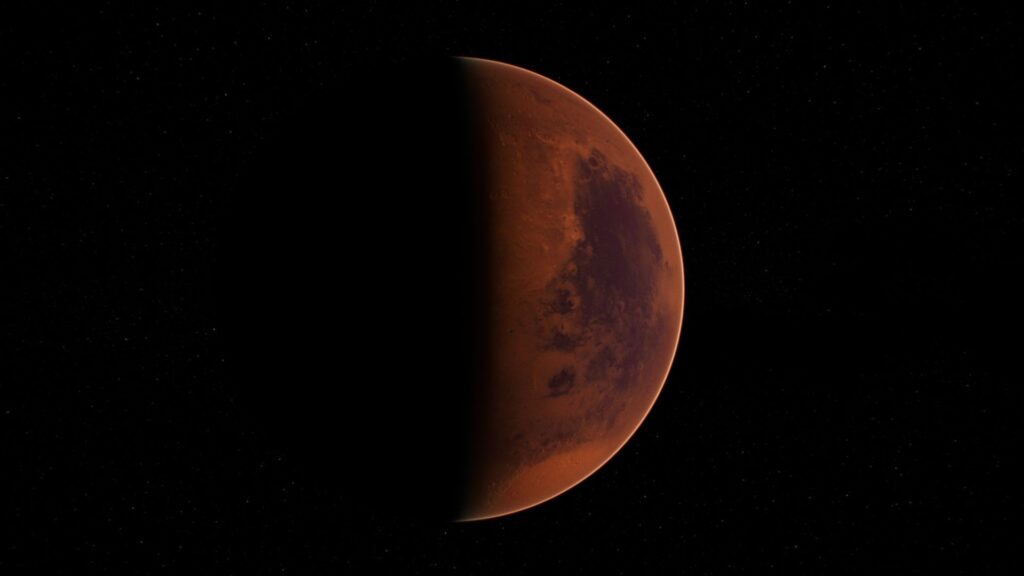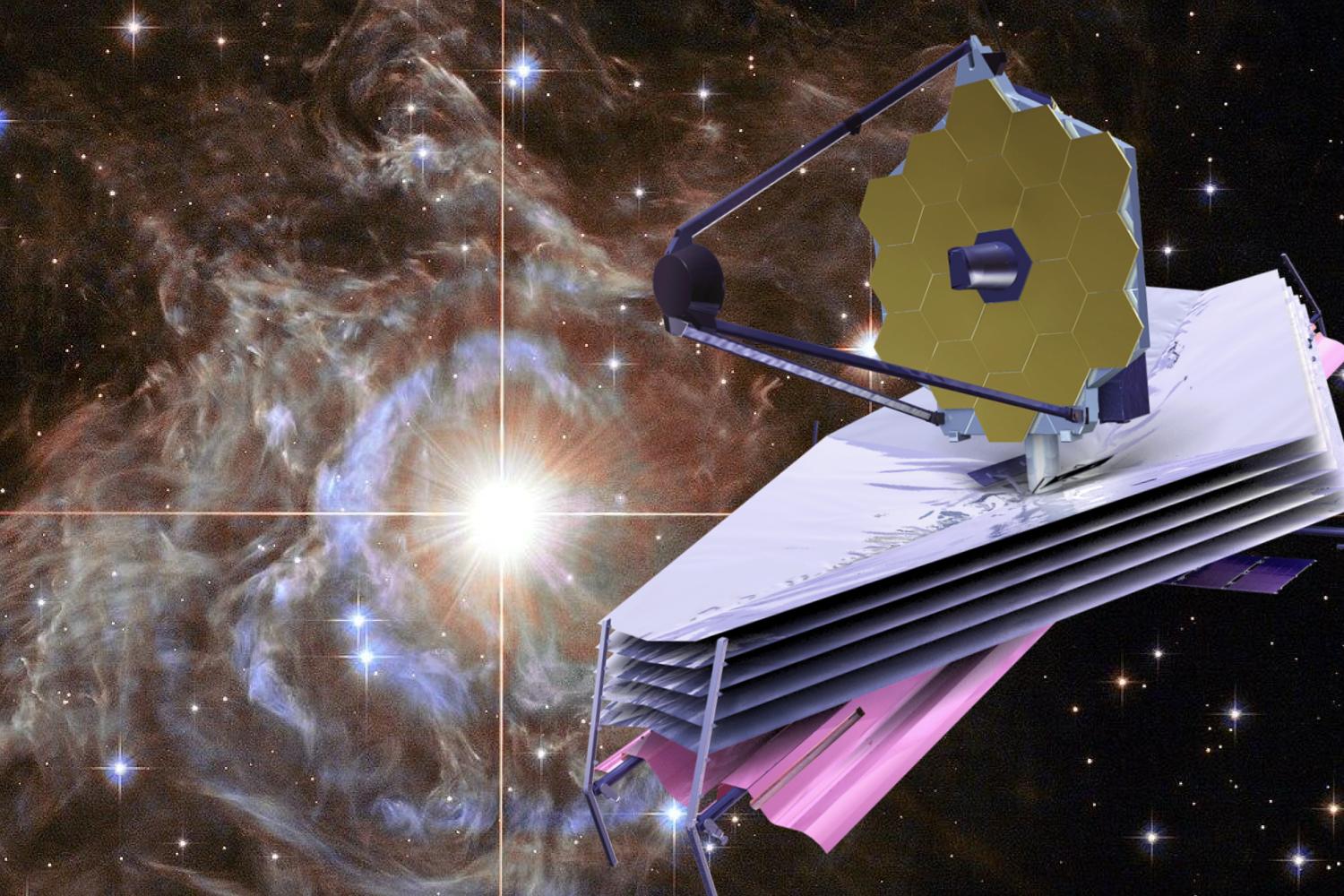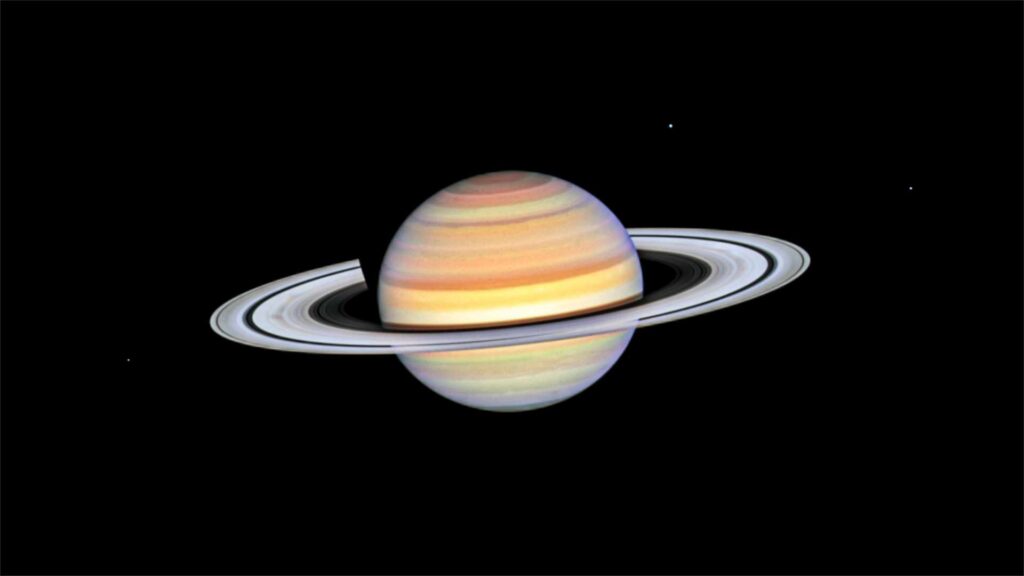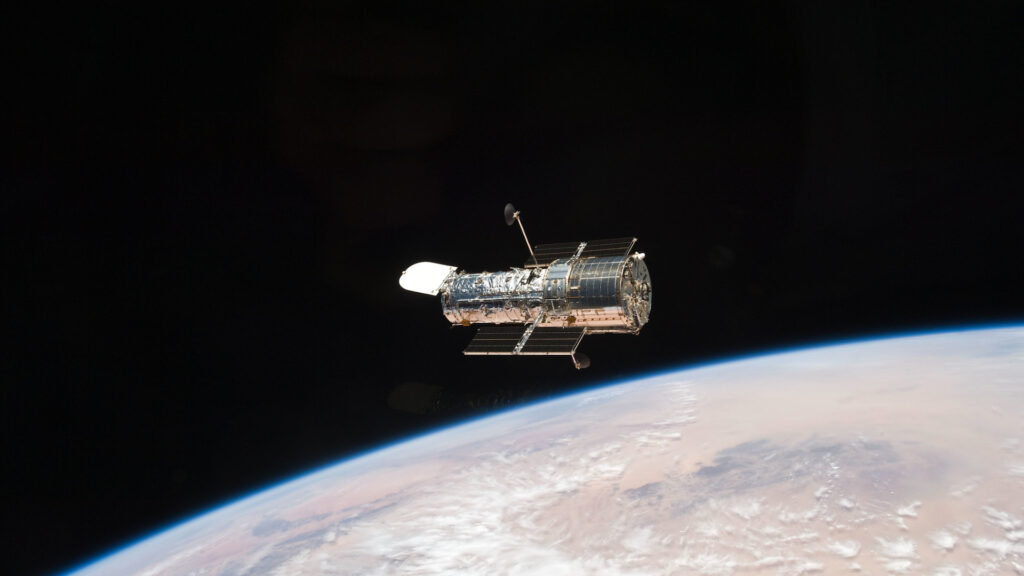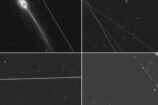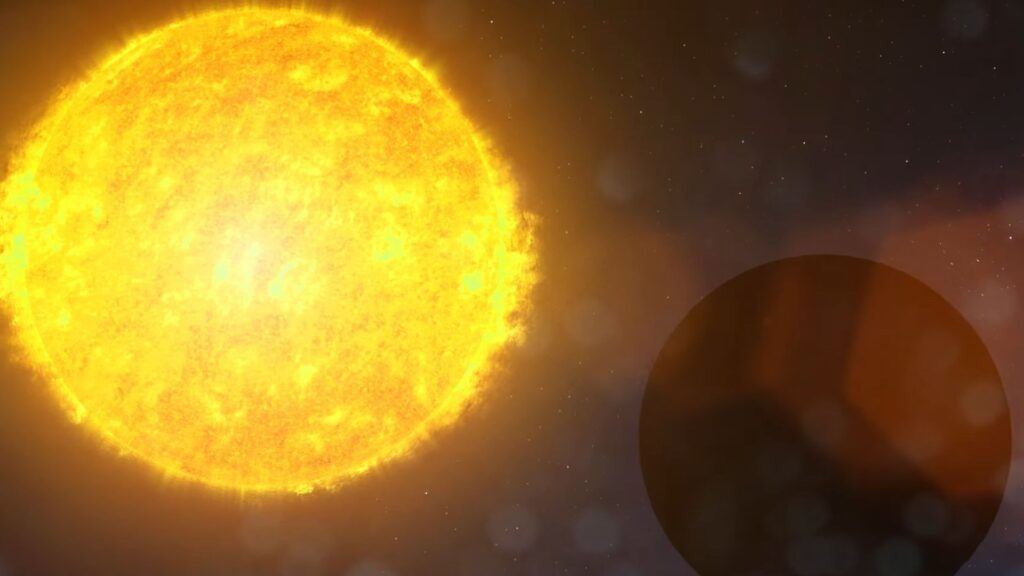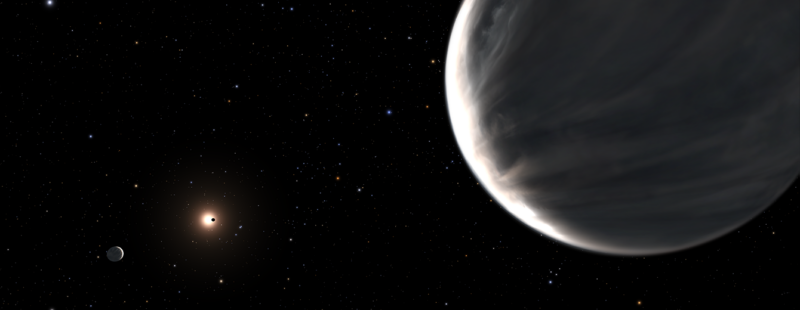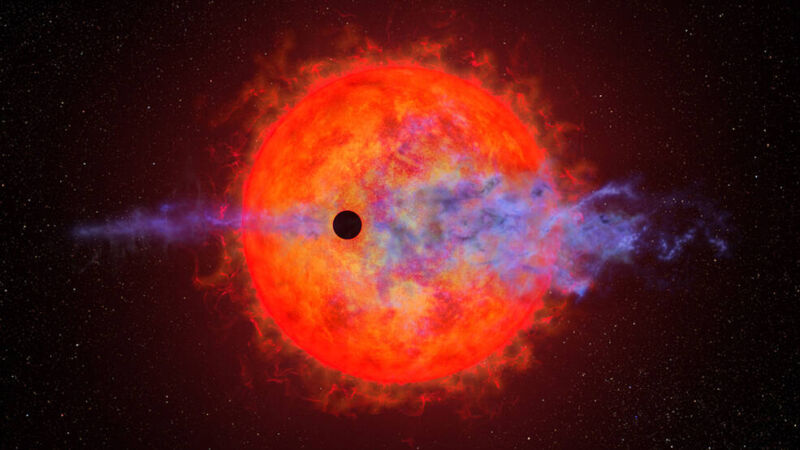
Enlarge
/
Artist's conception of the atmosphere being blasted off an exoplanet. (credit:
NASA, ESA, and Joseph Olmsted (STScI)
)
Some planets cannot hold on to their atmospheres. It's thought that most of whatever atmosphere
Mars
may have had was annihilated by the
solar wind
billions of years ago, even as Earth and Venus held on to theirs. But there are planets that orbit so close to their star that atmospheric loss is inevitable. With at least one of them, we’ve learned that it is also unpredictable.
Exoplanet
Au Mic b
is that planet. It orbits the young, hot, and temperamental red dwarf star
Au Microscopii
(Au Mic), which is only 23 million years old—nothing compared to our 4-billion-year-old sun. NASA’s Hubble Space Telescope caught this scorched world losing a portion of its atmosphere.
When a team of scientists from the NASA Goddard Space Flight Center, Dartmouth College, the University of California at Santa Cruz, and other institutions analyzed the Hubble observations, they were confused by the planet’s erratic behavior. There would be evidence of atmospheric loss in some of the data, then suddenly none at all. It was unpredictable.
chevron_right
